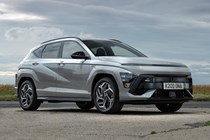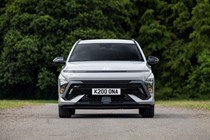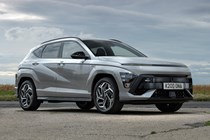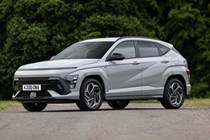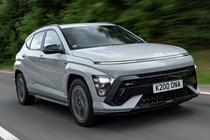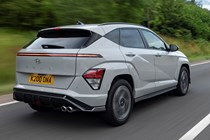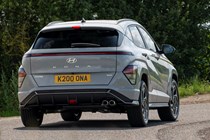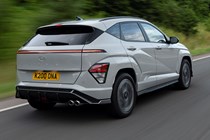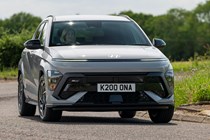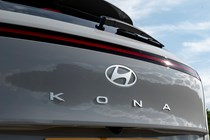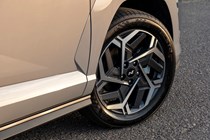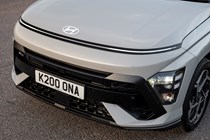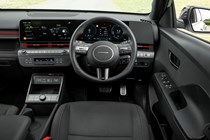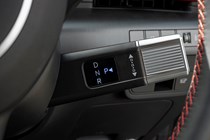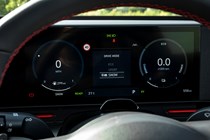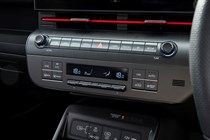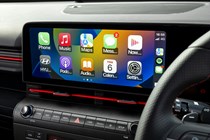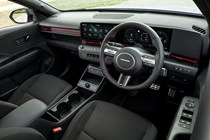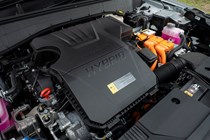
Hyundai Kona boot space, practicality and safety
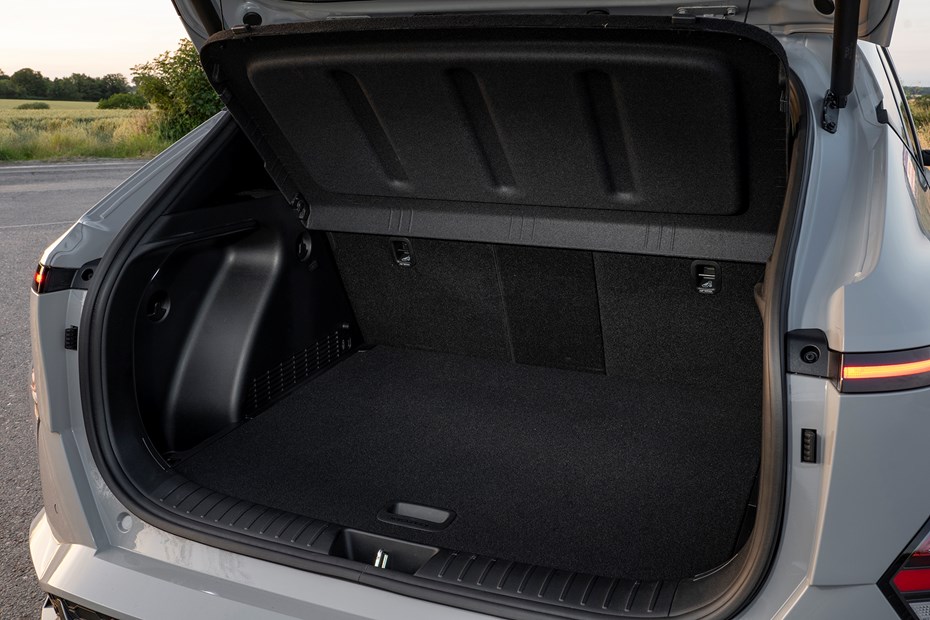
- A roomy five-seat crossover
- Decent 446-litre boot for luggage
- Cabin is peppered with storage cubbies
How much space is there?
The Hyundai Kona is a little bigger than its predecessor, which brings welcome extra space for bodies and bags. The wheelbase, or distance between the front and rear axles, is actually 60mm (more than two inches) longer and Hyundai claims this brings noticeable additional legroom.
You certainly won’t find seating four difficult in this compact crossover. Even tall adults can fit in either row, but if you are interested in carrying a fifth passenger in the central rear seat, things do get a little more crowded.
Hyundai has gone to great lengths to keep the front seat backs especially thin: they measure just 85mm thick and this means rear-seat passengers’ knees are less likely to jab into the front occupants’ backs. It’s simple and effective: if you sit on the back bench, you can see the front pews curve away from your knees.
Boot space and storage
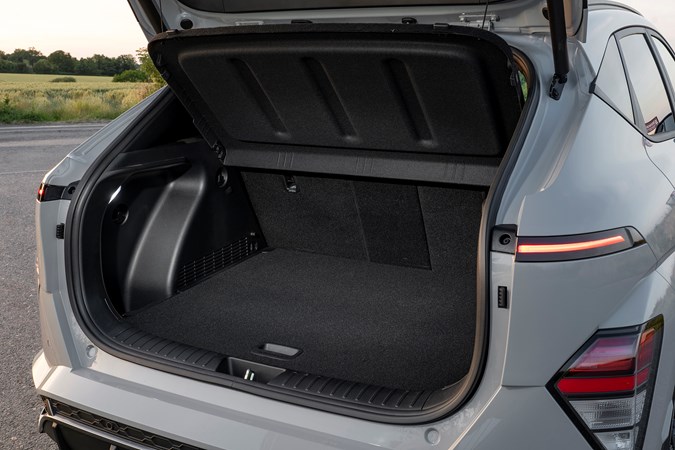
Luggage space on the latest Hyundai Kona has also grown, compared to the 2017 original. Hyundai says the boot is a third bigger and the quoted capacity stands at 466 litres. That’s a decent size and it’s a cinch to sling bags and family paraphernalia in there, with no deep lip or obstructions in the way when you load up. The loadbay has several lashing points and hooks and there’s a large secondary cubby under the boot floor.
The rear seat backs split in thirds, so you can flip-flop the second row of chairs to mix and match your carrying requirements. Fold them all away and you’re left with a cavernous boot totalling 1,300 litres.
Higher-spec models come with a powered tailgate that lifts at the press of a button. Call us old-fashioned, but we find it quicker to stick with a manual bootlid that is faster, simpler to use and doesn’t beep as it opens.
Is it easy to park?
The Hyundai Kona is not a large car and it is easy to see out of. The turning circle is tight enough and we never struggled to manoeuvre it in or out of a tight parking space. Even the lowliest Advance spec models come with parking sensors front and rear.
Check out the spec levels closely to see what parking goodies your chosen trim comes with. Models with Hyundai’s Surround View Monitor have clever 360-degree cameras to show you a bird’s-eye view of your manoeuvre and audio alerts are provided by Parking Distance Warning.
Perhaps the cleverest parking gizmo going is the Kona’s Remote Smart Parking Assist option, which lets you drive the Kona Hybrid remotely forwards or back on electric power so you can inch it out of particularly tight space – all from a button on the keyfob!
Safety
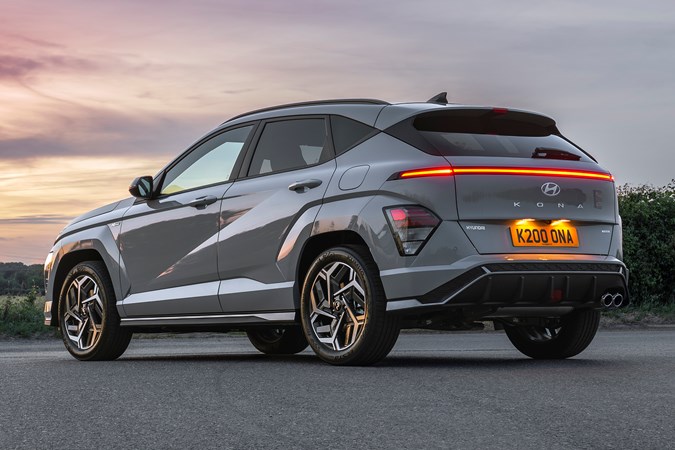
- A safe car bristling with safety kit
- Not yet independently tested by Euro NCAP
- Even entry cars are well equipped
Safety equipment falls into two categories: active systems which are usually electronics monitoring your driving and encouraging you to stay out of trouble – and passive ones, which are physical features to protect you from injury in the event of an accident. The new Hyundai Kona is well equipped with both.
A word of warning. Some of the active safety features can prove very annoying and our testers found the Kona in the upper extremes of beeping and bonging, as the car watches your every move.
It can be extremely frustrating. The car sounds a warning every time you stray even slightly over a speed limit (a feature now mandated to be compulsory in Europe). Stray even slightly near a white line and you’ll hear another beep and vibration from the steering wheel. Standard eye-tracking will even admonish you for taking your eyes off the road. It’s designed to keep you safe and it’s very clever, but the electronic nannies on the Kona can be rather irritating.
Seven airbags are fitted across both passenger rows. No independent Euro NCAP tests have been completed yet, but the last-generation Hyundai Kona was scored five stars in 2017. We will update our Hyundai Kona review when the new one is tested.
Euro NCAP rating
Ratings for this model not available

Equipment and options
- 3x3 point rear seat belts
- ABS
- Alarm
- Audio remote
- Body coloured bumpers
- Driver`s airbag
- Electric mirrors
- Front electric windows
- Heated mirrors
- Height adjustable drivers seat
- Isofix child seat anchor points
- Lumbar support
- Parking sensors
- PAS
- Passenger`s airbag
- Rear electric windows
- Remote locking
- Roof rails
- Sat Nav
- Side airbags
- Steering wheel rake adjustment
- Steering wheel reach adjustment
- Traction control
- Cloth seat trim
- Cruise control
- Alloy wheels
- Cloth seat trim
- Heated seats
- Cruise control
- Alloy wheels
- Climate control
- Electric driver`s seat
- Electric passenger`s seat
- Heated seats
- Partial leather seat trim
- Cruise control
- Electric sunroof
- Climate control
- Electric driver`s seat
- Electric passenger`s seat
- Electric sunroof
- Heated seats
- Leather seat trim
- Cruise control
Dimensions
| Length | 4350mm - 4385mm |
|---|---|
| Width | 2100mm |


